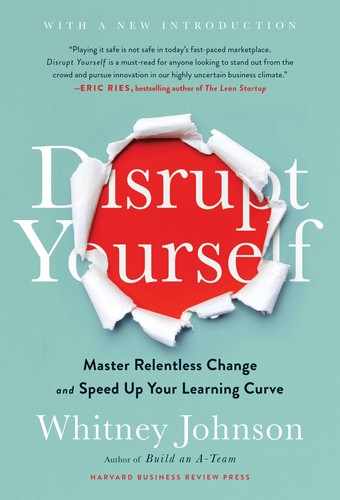My passion for surfing was greater than my fear of sharks.
—Bethany Hamilton
Ralph Waldo Emerson said, “Beauty is the moment of transition, as if the form were just ready to flow into other forms.” But when one has just jumped to a new curve, plunging into the abyss of a transition, beauty isn’t the first word that comes to mind.
In music, a transition is defined as a moment of modulation, a passing from one key to the next. In physics, it’s described as a change which results in the transformation of physical properties such as ice to water to steam. When we write an essay, it’s the sentence or passage that connects one topic to the next. More generally, trans means “a going across.” Whether we are transplanting or transacting, exchanging the old for a reimagined self, the classic S-curve can help us navigate the transition.
The more you disrupt, the better you’ll get at it. Like surfing, it is incredibly hard at first. But with practice, it becomes exhilarating.
On this score, one piece of research I find especially powerful comes from famed mathematician Benoit Mandelbrot.1 For decades, the “random walk” model of stock prices prevailed. It postulates that stock prices will go up or down with equal probability. Modern portfolio theory was largely built on this premise—that stock prices are statistically independent. Mandelbrot proved that prices are not independent. Financial prices have a “memory” of sorts. This is borne out in my experience of picking stocks—they have a personality. If a price takes a big leap up or down, there is a measurably greater likelihood that the stock will move just as violently the next day. What a company does today—a merger, a spinoff, a critical product launch—shapes what the company will look like a decade hence; in the same way, its stock-price movements today will influence stock-price movements tomorrow. Seems obvious, doesn’t it? But it wasn’t, until Mandelbrot.
Learning is not linear, but exponential: there is a cumulative and compounding effect. If you do something disruptive today, then the probability that you can be disruptive tomorrow increases. Momentum creates momentum.
Staying with what you already know may seem like the safer thing to do, but as Saul Kaplan, chief catalyst at the Business Innovation Factory, shared with me: “My life has been about searching for the steep learning curve because that’s where I do my best work. When I do my best work, money and stature have always followed.”
Like a novice trapeze artist letting go of the old to leap to the new, we are sure to experience a moment of midair terror. But we are far less likely to fall if we fling ourselves onto the next curve. And, in the seemingly terrible moment of transition, your dreams—the engine of disruption—will buoy you. Are you ready to jump?
